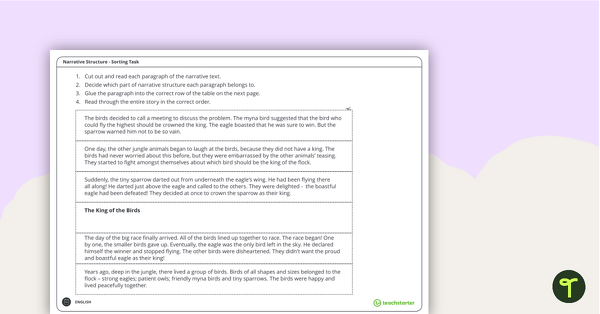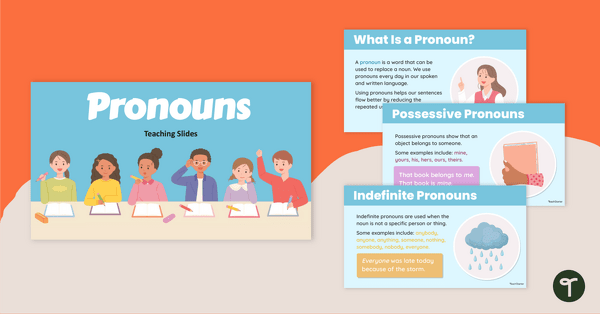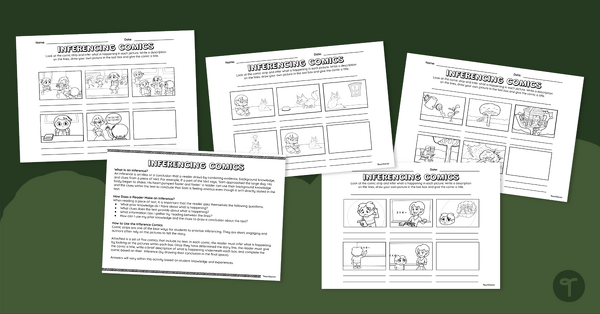Year 4
The English curriculum is built around the three interrelated strands of language, literature and literacy. Teaching and learning programs should balance and integrate all three strands. Together, the strands focus on developing students' knowledge, understanding and skills in listening, reading, viewing, speaking, writing and creating. Learning in English builds on concepts, skills and processes developed in earlier years, and teachers will revisit and strengthen these as needed.
In Years 3 and 4, students experience learning in familiar contexts and a range of contexts that relate to study in other areas of the curriculum. They interact with peers and teachers from other classes and schools in a range of face-to-face and online/virtual environments.
Students engage with a variety of texts for enjoyment. They listen to, read, view and interpret spoken, written and multimodal texts in which the primary purpose is aesthetic, as well as texts designed to inform and persuade. These encompass traditional oral texts including Aboriginal stories, picture books, various types of print and digital texts, simple chapter books, rhyming verse, poetry, non-fiction, film, multimodal texts, dramatic performances and texts used by students as models for constructing their own work.
The range of literary texts for Foundation to Year 10 comprises Australian literature, including the oral narrative traditions of Aboriginal and Torres Strait Islander Peoples, as well as the contemporary literature of these two cultural groups, and classic and contemporary world literature, including texts from and about Asia.
Literary texts that support and extend students in Years 3 and 4 as independent readers describe complex sequences of events that extend over several pages and involve unusual happenings within a framework of familiar experiences. Informative texts include content of increasing complexity and technicality about topics of interest and topics being studied in other areas of the curriculum. These texts use complex language features, including varied sentence structures, some unfamiliar vocabulary, a significant number of high-frequency sight words and words that need to be decoded phonically, and a variety of punctuation conventions, as well as illustrations and diagrams that support and extend the printed text.
Students create a range of imaginative, informative and persuasive types of texts including narratives, procedures, performances, reports, reviews, poetry and expositions.
(source: www.australiancurriculum.edu.au)
Achievement Standard
Receptive modes (listening, reading and viewing)
By the end of Year 4, students understand that texts have different text structures depending on purpose and context. They explain how language features, images and vocabulary are used to engage the interest of audiences. They describe literal and implied meaning connecting ideas in different textsÂ
They fluently read texts that include varied sentence structures, unfamiliar vocabulary including multisyllabic words. They express preferences for particular types of texts, and respond to others' viewpoints. They listen for and share key points in discussions.
Productive modes (speaking, writing and creating)
Students use language features to create coherence and add detail to their texts. They understand how to express an opinion based on information in a text. They create texts that show understanding of how images and detail can be used to extend key ideas.
Students create structured texts to explain ideas for different audiences. They make presentations and contribute actively to class and group discussions, varying language according to context. They demonstrate understanding of grammar, select vocabulary from a range of resources and use accurate spelling and punctuation, re-reading and editing their work to improve meaning.
(source: www.australiancurriculum.edu.au)
- Plus Plan

Narrative Structure Sorting Task
A sorting task to help students learn about narrative structure.
- Plus Plan

Detailed Character Profile Worksheet
A worksheet for students to use when building a character for a story.
- Free Plan

Paralympic Sports – Inquiry-Based Project
Have your students investigate the different types of Paralympic sports with this inquiry-based learning project.
- Plus Plan

Earth’s Resources Worksheet - Natural Resources & Fossil Fuels (3-4)
Explore what's buried in rocks underground with a printable Earth’s Resources Worksheet for Year 4.
- Free Plan

Self Monitoring Reading Strategy Poster
Help students reflect on their reading with this Self Monitoring Reading Strategy Poster.
- Plus Plan

Interactive Word Wall Activities - Task Cards
Build literacy and vocabulary skills with our printable set of 40 Interactive Word Wall Activities.
- Free Plan

Public Speaking Tips For Students - Poster
Display this Public Speaking Tips for Students poster in your classroom when learning how to speak in front of peers.
- Plus Plan

Direct and Indirect Speech Grammar Posters
Help students to learn what both direct and indirect speech entails as well as providing examples on how they can use it themselves with our direct and indirect speech posters.
- Free Plan

Monitoring Comprehension Strategies Text Annotations Poster
Help students monitor their comprehension with this Monitoring Comprehension Reading Strategy using text annotations.
- Plus Plan

Context Clues Reading Comprehension Handouts
Use Context Clues Reading Comprehension Handouts to assess your student's ability to define unknown words using context clues.
- Plus Plan

Write a Biography Project
Engage students in an enriching biography project that guides them through researching and writing about a famous person.
- Plus Plan

Word Whizz - Spelling Game for Kids
Play ‘Word Whizz’, a fast-paced spelling game for kids that encourages quick thinking and correct spelling.
- Plus Plan

Prediction in Reading Comprehension Task
Help students to engage with prediction during reading with this predictions in reading comprehension task.
- Plus Plan

Fluency Assessment Tool
Use our fluency assessment tool to gauge your students’ oral reading fluency, speed, accuracy and more.
- Plus Plan

Year 4 Grammar Review Task Cards
Download these Year 4 grammar review task cards perfect for literacy rotations.
- Plus Plan

Pronouns Teaching Slides
Use this pronouns PowerPoint presentation to teach your students about some of the most common types of pronouns.
- Plus Plan

Sequence an Information Report – Cut and Paste Worksheets
Use these information report examples to teach your students about sequencing facts in a logical order.
- Plus Plan

Country Report – Mini Book Template
Download this information report template to use when teaching informative writing to primary students.
- Plus Plan

Direct Speech - Teaching Presentation
Teach the rules of punctuating direct speech using double quotation marks with an interactive teaching presentation.
- Plus Plan

How to Write Dialogue - PowerPoint Teaching Slides
Teach your students how to write dialogue using double quotation marks with an interactive teaching presentation.
- Plus Plan

Writing Out Loud: Dialogue Punctuation Worksheet
Practise using double quotation marks in writing with a Punctuating Dialogue worksheet.
- Plus Plan

Text Type Structure Poster Display Pack
Display these posters in your room as a visual reminder of the structure of a variety of text types.
- Plus Plan

Information Report Text Type Poster With Annotations
Display this information report with annotations to help students identify the structure of this type of text.
- Plus Plan

Procedure Text Type Poster With Annotations
Display this procedure text with annotations to help students identify the structure of a procedure.
- Plus Plan

Subordinating Conjunctions Worksheet
Use this worksheet to enable students to practise identifying and constructing sentences using subordinating conjunctions.
- Plus Plan

The Force of Gravity Comprehension Worksheets
Download this gravity worksheet to teach your Year 4 students about the force of gravity and its impact on our daily lives.
- Plus Plan

Inference Comics - Worksheet
Use this set of comic strips when teaching your students how to infer information from everyday situations.
- Free Plan

Which Homophone? Worksheets
Download this differentiated homophones worksheet to help your students become more familiar with this tricky vocabulary!
- Plus Plan

Spell the Homophone Worksheets
Get your students spelling homophones correctly with this set of differentiated worksheets for your vocabulary lessons.
- Plus Plan

Homophones in the Dictionary Worksheets
Help your students become familiar with the meanings and spellings of common homophones with this differentiated dictionary skills worksheet.
- Plus Plan

Inspirational Authors – Speechwriting Project
Get you students to research and celebrate an inspirational author with this speechwriting activity.
- Plus Plan

Inflectional Endings - Spelling with Suffixes Worksheets
Spell words with the inflectional endings -ed, -ing, -s, -es and -ies with a pack of printable practise worksheets covering inflected endings.